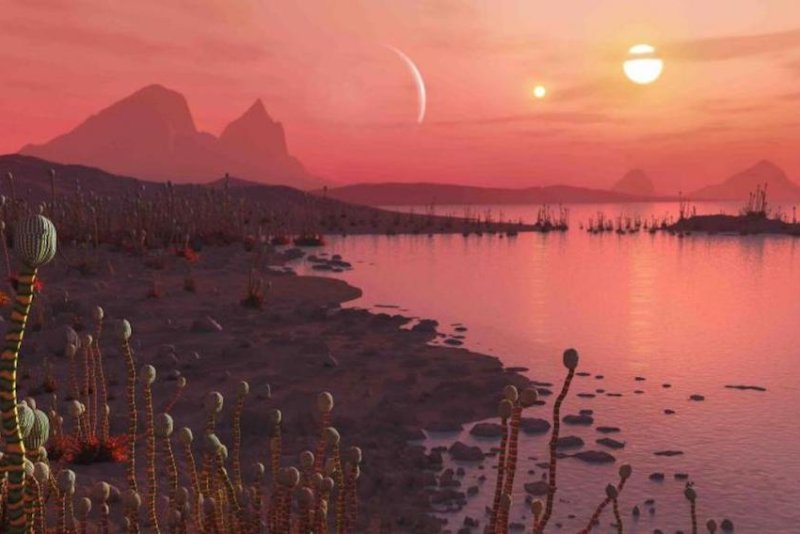An artistic rendering shows the presence of life on an exoplanet in orbit around a binary star system. Photo by Mark Garlick/RAS
March 7 (UPI) -- When a third star passes relatively close to a binary star system hosting planets, the planetary system's habitable zone gets a boost.
The habitable zone, or Goldilocks zone, is the orbital range in which exoplanets can host water in liquid form. Stable, liquid water is a prerequisite for the development life.
According to a new model developed by scientists at the University of Sheffield, the third star squeezes the stellar pair together, causing the zone to expand.
Roughly a third of all stellar systems feature two or more stars. When a stellar pair are far apart, the habitable zone is determined by the radiation of each individual star. But if the two orbiting stars are sufficiently close, they can influence one another's habitable zones.
The added warmth provided by a stellar neighbor increases the size of the Goldilocks zone.
To better understand how this phenomena plays out in a stellar nursery, where young stars are more likely to exist in pairs, and where close encounters with other star systems are frequent, researchers designed a model.
In a stellar nursery featuring 350 binaries, the model determined at least 20 pairs would have their habitable zones expanded by the presence of a stellar third wheel, increasing the odds of a liquid-water-hosting exoplanet.
"The search for life elsewhere in the universe is one of the most fundamental questions in modern science, and we need every bit of evidence we can find to help answer it," Bethany Wootton, an undergrad astronomy student, said in a news release.
Wootton developed the model with Sheffield research fellow Richard Parker. They published their findings this week in the journal Monthly Notices of the Royal Astronomical Society.
"Our model suggests that there are more binary systems where planets sit in Goldilocks zones than we thought, increasing the prospects for life," Wootton said. "So those worlds beloved of science fiction writers -- where two suns shine in their skies above alien life -- look a lot more likely now."
Researchers are currently building additional complexity into their model to better understand whether the disruptive impacts of a third star cancel out the increased odds of life-conducive conditions.















